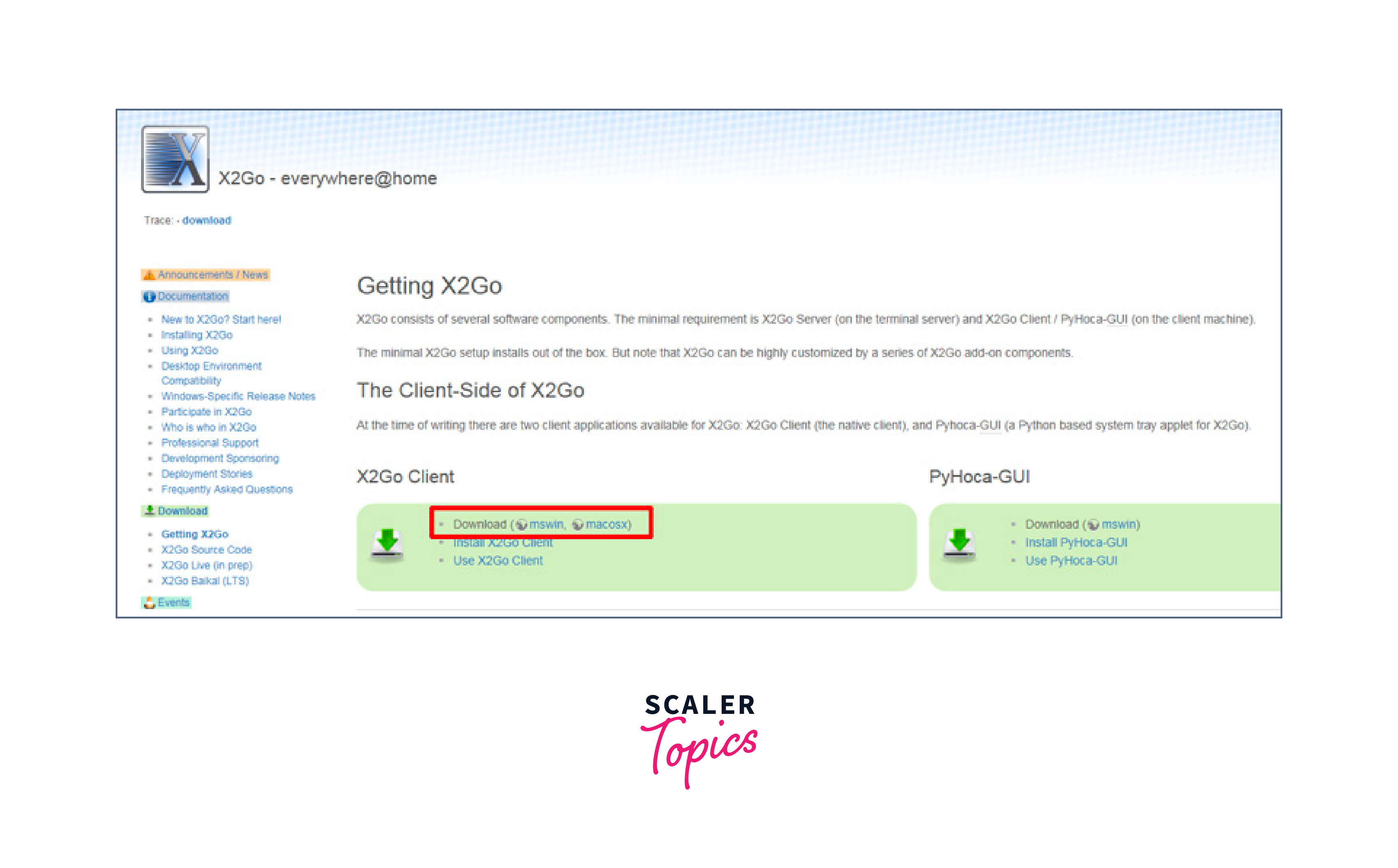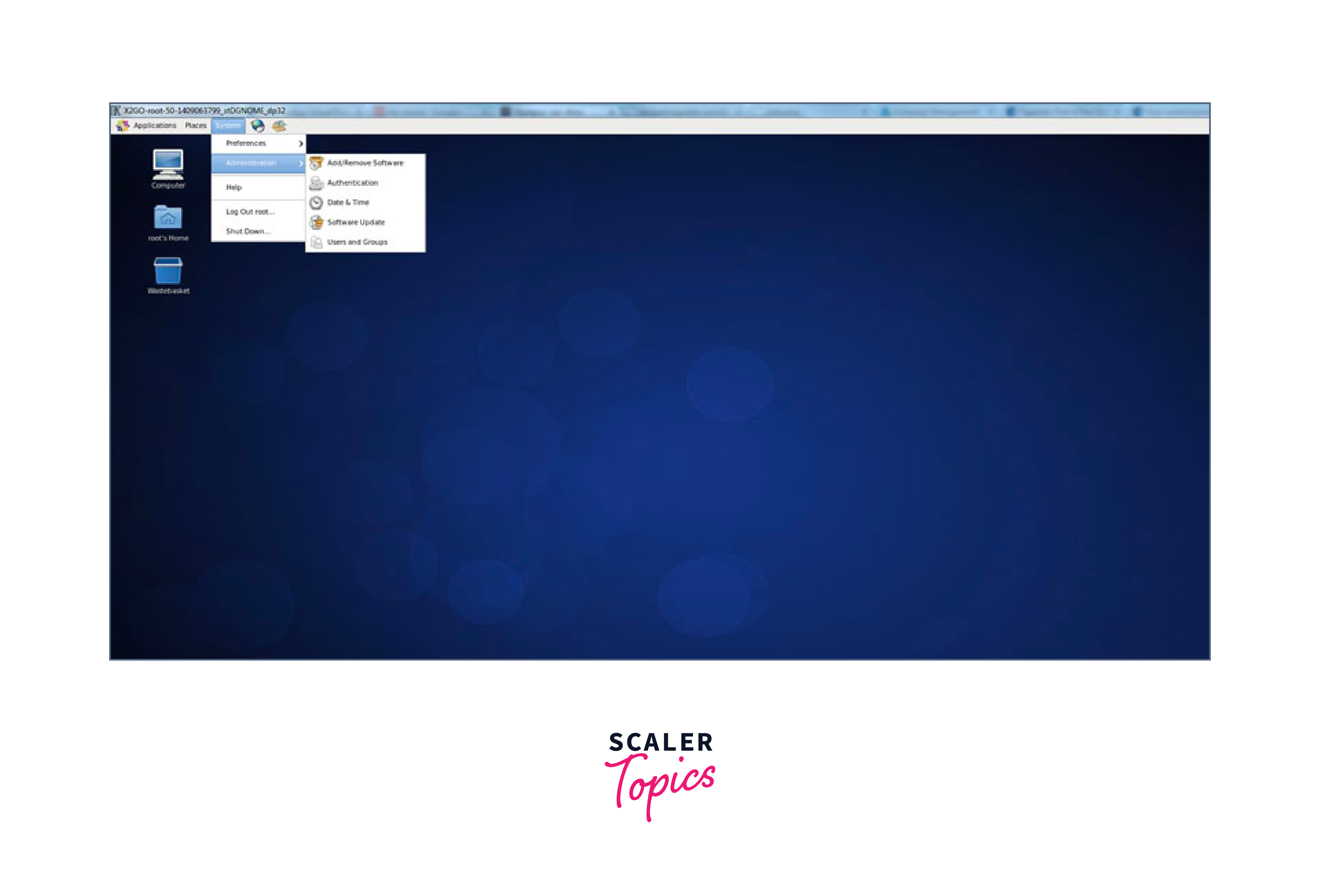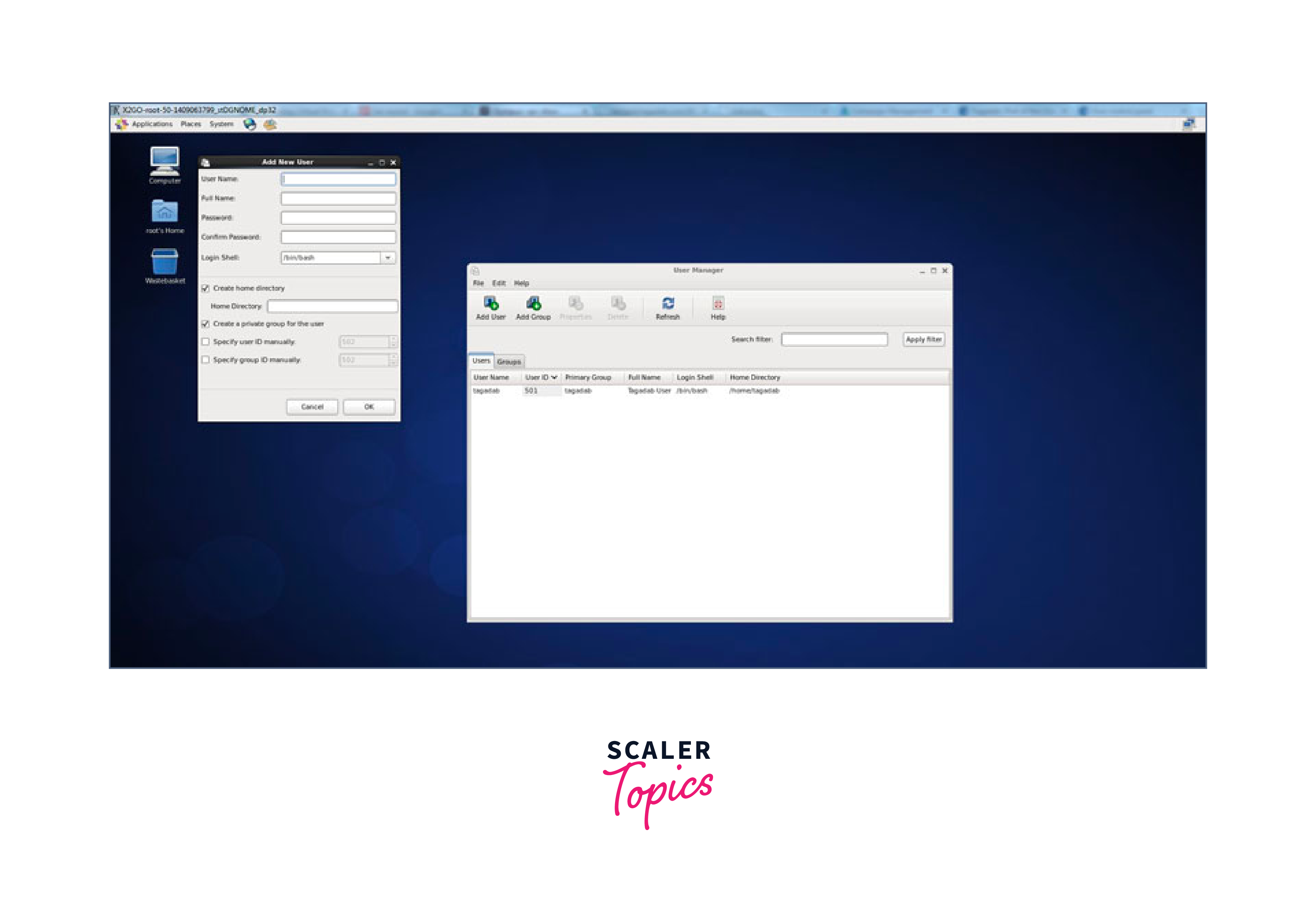How to Use Linux's Virtual Desktops?
Virtual desktops, sometimes referred to as workspaces or virtual workspaces, are a potent feature that gives users the ability to neatly organize their desktop environment and handle numerous tasks. You can build and transition between numerous distinct workplaces, each with its own set of windows and apps, using virtual desktops. By clearing the workspace, sharpening attention, and easing task organization, this function boosts productivity.
Virtual desktops were first introduced in the UNIX environment and have subsequently been incorporated into many different operating systems, including Linux. Linux is a popular choice for developers, power users, and anybody looking for an efficient computing experience since it implements virtual desktops, which give users a flexible and configurable workspace.
Typical Use Case Scenarios
The virtual desktops for Linux support a range of use cases, including:
- Multitasking:
Virtual desktops are especially helpful for multitasking since they let users work on several projects at once without clogging their workspace. - Project Management:
Users can keep pertinent documents, programs, and messages arranged and simple to find by allocating a virtual desktop to each project. - Software Development:
To isolate their development environments, test environments, and project management tools and streamline their workflow, developers can use virtual desktops. - Presentation and Collaboration:
Virtual desktops can be used to create a concentrated workspace with particular programs and data for sharing during presentations or collaboration sessions. - Personalization & Customization:
The vast customization possibilities available with Linux's virtual desktops let users design their desktop settings to match their preferences and working methods.
Connecting to a Linux Virtual Desktop
To get started with Linux's virtual desktops, you will need access to a Linux server. There are multiple ways to connect to a Linux virtual desktop, and we will cover the installation and setup process using the X2Go Client, a popular remote desktop software.
Setting up Linux's virtual desktops and utilizing X2Go clients provide a robust solution for efficient workspace management and remote access. The combination of virtual desktops and X2Go clients enhances productivity, improves task organization, and allows for seamless remote connections to Linux virtual desktop environments.
Install a Virtual Server
Before connecting to a Linux virtual desktop, you need to ensure that you have a virtual server set up. Virtual server providers such as Amazon Web Services (AWS), Google Cloud Platform (GCP), or DigitalOcean offer easy deployment options to create a Linux virtual machine. Choose a provider, create an instance, and make sure you have the necessary login credentials to connect remotely.
- Sign up for an account with the virtual server provider of your choice.
- Follow the provider's instructions to create a new virtual server instance.
- Select a Linux distribution (such as Ubuntu, CentOS, or Debian) for your virtual server.
- Configure the specifications of the virtual server, including CPU, RAM, storage, and networking options.
- Create and save a secure SSH key pair to use for remote access to your virtual server.
Install X2Go Client
Next, you need to install the X2Go Client on your local machine. X2Go is a free and open-source remote desktop solution that supports Linux, Windows, and macOS. You can download the X2Go Client from the official website and follow the installation instructions for your operating system.

To install the X2Go client for Linux follow these steps:
-
Open a terminal on your Linux machine.
-
Update the package repositories by running the following command:
Install the X2Go client package by running the following command:
Connect to your Linux Virtual Desktop
After the installation is complete, you can launch the X2Go Client from the applications menu or by running the command x2goclient in the terminal.
- In the X2Go Client interface, click on the New Session button to create a new session configuration.
- In the Session tab, enter a name for your session configuration in the Session name field.
- In the Server tab, enter the IP address or hostname of your Linux virtual desktop in the Host field.
- Specify the port number if it is different from the default (22 for SSH) in the Port field.
- Choose the type of session you want to connect to from the Session type dropdown menu. Common options include GNOME, KDE, or Xfce.
- In the Input/Output tab, adjust any settings related to sound, printing, or folder sharing, if necessary.
- In the Media tab, you can configure options for audio and video playback.
- In the Shared folders tab, you can specify folders on your local machine to be accessible from the virtual desktop.
- Once you have configured the session settings, click on the OK button to save the session configuration.
- Select the session you just created from the list and click on the Connect button.
- Enter your login credentials (username and password) for the Linux virtual desktop when prompted.
The X2Go Client will establish a connection to the Linux virtual desktop, and a new window will open displaying the virtual desktop environment. You can now use the Linux virtual desktop through the X2Go Client interface, interacting with the applications and files as if you were working directly on the virtual desktop.
By following these steps, you should be able to install the X2Go Client on your Linux machine and connect to a Linux virtual desktop using the client. X2Go provides a reliable and feature-rich remote desktop solution for Linux, enabling seamless access to your virtual desktop environment.
Create a New Linux Account
Once you have successfully connected to your Linux virtual desktop, you may want to create a new Linux account specific to your virtual desktop usage. This allows you to separate your virtual desktop environment from your main user account.
The Super User account is a unique one that is not intended to perform typical user sessions. Data loss and irreparable harm are possible consequences of actions taken under the account. Although it is not necessary, we strongly advise creating a new account and reconnecting with it to protect your data and operating system.
-
Depending on the operating system you are running, there are many ways to create a new account. The screens that follow are for Gnome on Centos or Scientific.

-
Then click "Add User" and fill in the pop-up box's information. 'Ok' should be clicked.

-
To log out, choose Quit under Root located in the top right corner. Then, open the X2Go application and sign in as the new user before reconnecting.
For operating systems using xfce such as Debian, Fedora, or Ubuntu, please follow these instructions.
- Applications menu > Terminal > Accessories
- Use the adduser command and the user name you want to create. For more details, adhere to the directions. Then, by selecting Logout from the Applications menu, you can log out before reconnecting as the new user.
To create a new Linux account via terminal on your desktop, follow these general steps:
- Open a terminal window on your Linux virtual desktop.
- Use the appropriate package manager for your Linux distribution to install the sudo package if it is not already installed.
- Run the command sudo adduser new_username to create a new user account. Replace new_username with your desired username.
- Follow the prompts to set a password and provide any additional information required. Once the account is created, you can log out of your current session and log in with the newly created account.
Best Virtual Desktop Providers
If you don't want to set up your virtual server and prefer a hassle-free experience, several virtual desktop providers offer pre-configured Linux virtual machines. Some popular providers include:
- Amazon WorkSpaces:
Amazon's fully managed desktop-as-a-service solution that offers Linux virtual desktops with various configurations and storage options. - Microsoft Azure Virtual Desktop:
Microsoft's cloud-based virtual desktop infrastructure that supports Linux, providing flexibility and scalability. - Google Cloud Virtual Desktop Infrastructure:
Google Cloud's virtual desktop solution that allows you to run Linux desktop environments with high-performance GPUs and seamless integration with other Google Cloud services.
These providers offer user-friendly interfaces, scalable infrastructure, and comprehensive support, making it easier for both individuals and businesses to leverage Linux virtual desktops.
Linux's virtual desktops provide a flexible and efficient way to manage your workspaces, boost productivity, and separate your tasks. By connecting to a Linux virtual desktop using the X2Go Client, creating a new Linux account, and exploring the options offered by virtual desktop providers, you can take full advantage of the power and versatility that Linux offers for virtual desktop environments.
Benefits of Linux's Virtual Desktops
Enhanced Productivity:
Virtual desktops enable users to categorize their jobs and work on several projects at once, which helps to increase productivity. Each virtual desktop can be assigned to a particular activity or project, minimizing distractions and maintaining access to associated apps and files.
Effective Task Switching:
Users can quickly and easily switch between virtual desktops, enabling them to quickly switch between various projects or work environments. Workflow is improved because there is no longer a need to switch between numerous monitors or frequently rearrange windows.
Workplace Organisation:
With virtual desktops, users can set up their workplace according to their own preferences and professional needs. For diverse uses, such as work, personal use, study, or enjoyment, you can establish distinct virtual desktops and tailor each one's look and programs.
Reduction of Desktop Clutter:
By segmenting apps and windows into distinct workspaces, virtual desktops reduce desktop clutter. This encourages a tidy and orderly desktop environment, improving focus and minimizing visual distractions.
Resource Optimisation:
Linux virtual desktops use the system's resources effectively. You can assign various apps to distinct virtual desktops rather than opening several instances of one, which will optimize memory and processing resources.
Security and Privacy:
A further degree of privacy and security is offered by virtual desktops. You can lessen the possibility of unintentionally disclosing or exchanging sensitive information by designating a separate virtual desktop for such tasks.
Conclusion
A complete solution for effective and flexible workspace management is provided by setting up virtual desktops on Linux and connecting remotely with the X2Go client. These are the main factors to think about:
Linux Virtual Desktop Configuration:
- Virtual desktops in Linux are an effective tool for streamlining the organization and management of several tasks.
- By clearing the workspace, sharpening focus, and facilitating job organization, they increase productivity.
- With the aid of virtual desktops, users can switch between tasks quickly and easily, moving easily between various projects or work situations.
- Users can keep relevant programs and files close at hand by allocating different virtual desktops to particular tasks or projects, encouraging workspace organization.
- By enabling users to assign apps to specific workspaces, virtual desktops optimize system resources while enhancing memory use and performance.
- Sensitive tasks might be divided into different virtual desktops to improve their privacy and security.
X2Go Clients for Remote Connections:
- Users can create secure remote connections and access their virtual desktop environments by installing the X2Go client.
- Linux, Windows, and macOS operating systems are supported by X2Go, which also has an intuitive user interface.
- It provides options for configuring session settings, such as selecting a desktop environment, a display resolution, and other parameters.
- Clients for X2Go enable dependable remote access and smooth connectivity to Linux virtual desktops.
- Users can interact with their virtual desktop environments just like they would with a physical computer by using X2Go clients.
